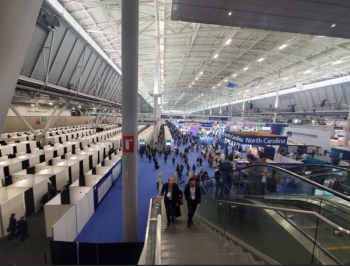
- BioPharm International-10-01-2007
- Volume 20
- Issue 10
Back to the Future
One company even connected hollow fiber cell culture chambers to living cows.
Thirty-five years ago, Stanley Cohen and Herbert Boyer created the field of recombinant DNA technology. Three years later, César Milstein and Georges Köhler produced the first hybridoma and the technique to create monoclonal antibodies. Modern biotechnology was born.
William Tolbert
Many hurdles remained to be overcome, however, before these advances could lead to the production of biopharmaceuticals. In the early days, because the FDA was concerned about the potential of transmitting cancer-promoting host-cell components to patients, the agency only permitted primary cultures of animal or human cells as substrates for human drug production. (An exception was made for fully "normal" human cell lines, such as the WI-38 diploid cell line, derived by Leonard Hayflick from human embryonic lung tissue). No recombinant cell lines or hybridomas were allowed, because they are all, by their very nature, neoplastic when injected into syngeneic animals. In addition, there was no demonstrated method to grow mammalian cells at large scale.
During that time, I was a scientist at Monsanto Company developing large-scale perfusion culture systems. Many other culture technologies were also being invented—from flat Teflon tubes rolled onto 35-mm movie film reels, to air-lift fermenters. One company even connected hollow fiber cell culture growth chambers to living cows!
Eventually, deep tank suspension culture in batch or fed-batch formats was developed out of microbial fermentation technology. Major problems had to be addressed, however, including the reduced shear micro-environments necessary for mammalian cells, the complexity of their nutrient requirements, and the level of sterility and containment essential for antibiotic-free culture. Eventually, these challenges were overcome. In the mid-1980s, the FDA also permitted continuous (i.e., tumor-producing) cell lines as biopharmaceutical substrates, under strict control for adventitious agent and host cell DNA removal.
Today, new classes in biopharmaceuticals are in development: gene and cell therapy products, including stem cells. It is encouraging to see that we are building on our experience from 30 years ago. The FDA has jumped ahead of the curve, by creating the Office of Cellular, Tissue, and Gene Therapies, publishing several guidelines for gene and cell therapies, and issuing the 21 CFR 1271 regulation on human cells, tissues, and cellular- and tissue-based products in 2004.
Scientists developing manufacturing methods are also building on what we learned working with protein therapeutics. For in vivo gene therapy products, in which the vector is injected into the patient (e.g., the recently reported Cornell Medical College study for Parkinson's disease), manufacturing methods generally are not problematic. A viral vector is produced by cell lines using conventional culture systems, which may be scaled up as required. A single manufacturing batch may produce thousands of patient doses.
On the other hand, in vitro gene therapy—in which cells are treated in culture and then returned to the patient—and most cell therapy products, do pose challenges. Each lot is manufactured for just one patient, and the process is labor intensive. A feasible commercial-scale manufacturing method has yet to be developed for these products.
My experience from the beginnings of biotech gives me confidence that today's innovators will find success with these new technologies. The great potential of these medical advances is yet to be tapped.
William R. Tolbert is the president of WR Tolbert & Associates, San Diego, CA, 858.693.8163,
Articles in this issue
about 18 years ago
Protein Therapeutics and the Regulation of Quality: A Brief Historyabout 18 years ago
Process Chromatography: Five Decades of Innovationabout 18 years ago
Biotechnology: Past, Present, and Futureabout 18 years ago
Contract Services Enabled the Biopharmaceutical Boomabout 18 years ago
The Evolution of Protein Expression and Cell Cultureabout 18 years ago
Biotech Manufacturing Grows Upabout 18 years ago
FDA Modernizes Biotech Regulation Over The Past 20 Yearsabout 18 years ago
Glycosylation and the Demands of Antibody Engineeringabout 18 years ago
What Comes NextNewsletter
Stay at the forefront of biopharmaceutical innovation—subscribe to BioPharm International for expert insights on drug development, manufacturing, compliance, and more.




